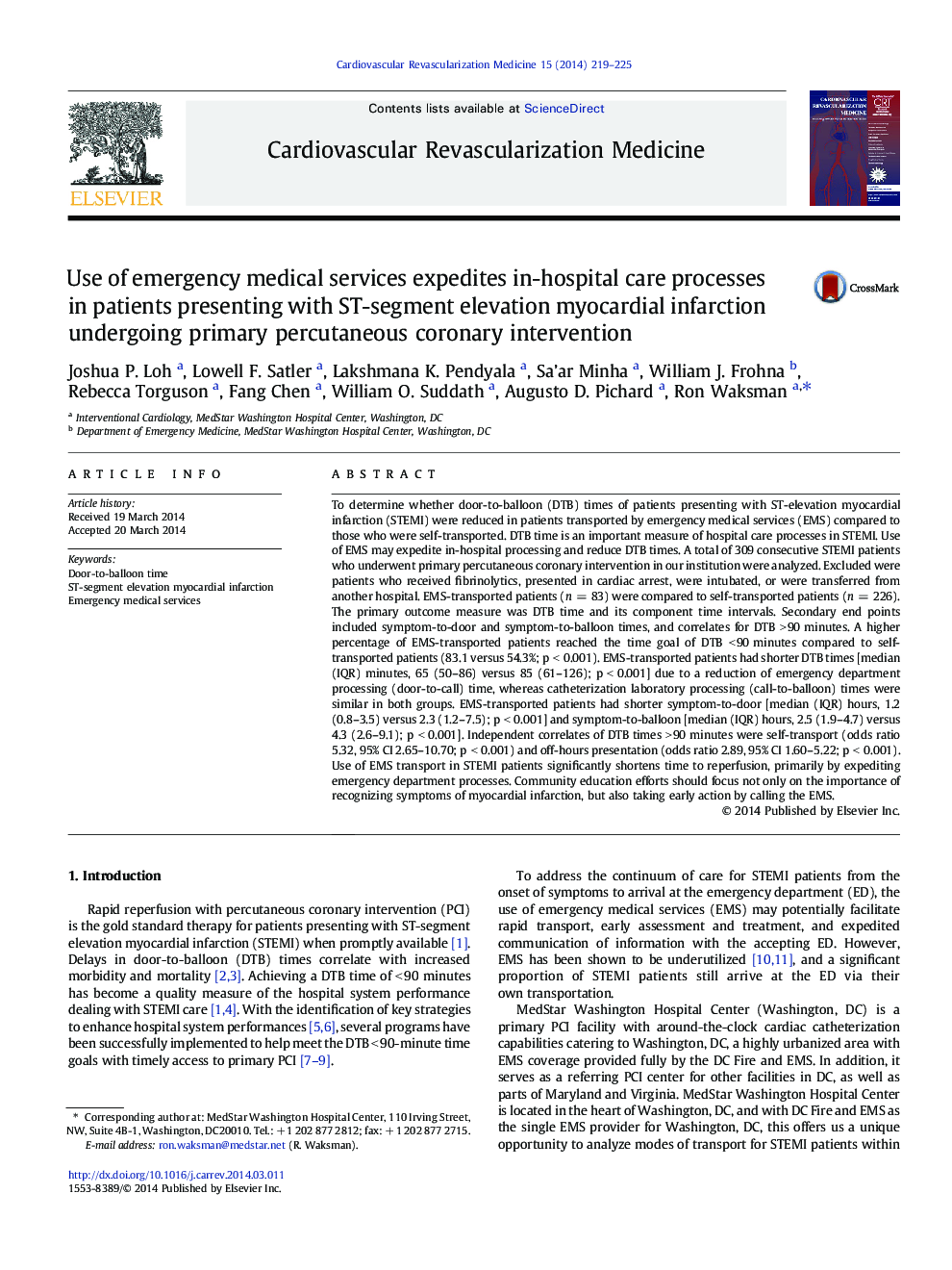| کد مقاله | کد نشریه | سال انتشار | مقاله انگلیسی | نسخه تمام متن |
|---|---|---|---|---|
| 5921297 | 1164883 | 2014 | 7 صفحه PDF | دانلود رایگان |

To determine whether door-to-balloon (DTB) times of patients presenting with ST-elevation myocardial infarction (STEMI) were reduced in patients transported by emergency medical services (EMS) compared to those who were self-transported. DTB time is an important measure of hospital care processes in STEMI. Use of EMS may expedite in-hospital processing and reduce DTB times. A total of 309 consecutive STEMI patients who underwent primary percutaneous coronary intervention in our institution were analyzed. Excluded were patients who received fibrinolytics, presented in cardiac arrest, were intubated, or were transferred from another hospital. EMS-transported patients (n = 83) were compared to self-transported patients (n = 226). The primary outcome measure was DTB time and its component time intervals. Secondary end points included symptom-to-door and symptom-to-balloon times, and correlates for DTB > 90 minutes. A higher percentage of EMS-transported patients reached the time goal of DTB < 90 minutes compared to self-transported patients (83.1 versus 54.3%; p < 0.001). EMS-transported patients had shorter DTB times [median (IQR) minutes, 65 (50-86) versus 85 (61-126); p < 0.001] due to a reduction of emergency department processing (door-to-call) time, whereas catheterization laboratory processing (call-to-balloon) times were similar in both groups. EMS-transported patients had shorter symptom-to-door [median (IQR) hours, 1.2 (0.8-3.5) versus 2.3 (1.2-7.5); p < 0.001] and symptom-to-balloon [median (IQR) hours, 2.5 (1.9-4.7) versus 4.3 (2.6-9.1); p < 0.001]. Independent correlates of DTB times > 90 minutes were self-transport (odds ratio 5.32, 95% CI 2.65-10.70; p < 0.001) and off-hours presentation (odds ratio 2.89, 95% CI 1.60-5.22; p < 0.001). Use of EMS transport in STEMI patients significantly shortens time to reperfusion, primarily by expediting emergency department processes. Community education efforts should focus not only on the importance of recognizing symptoms of myocardial infarction, but also taking early action by calling the EMS.
Journal: Cardiovascular Revascularization Medicine - Volume 15, Issue 4, June 2014, Pages 219-225